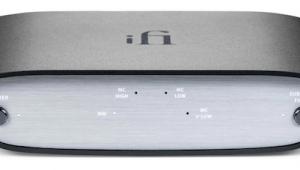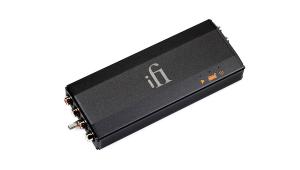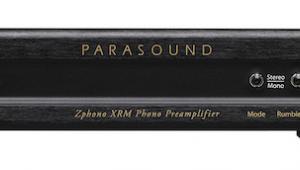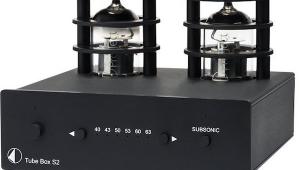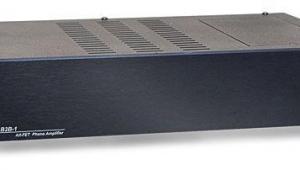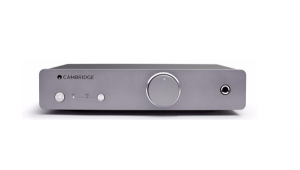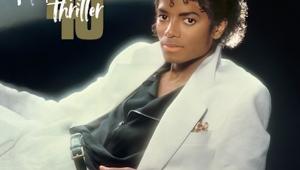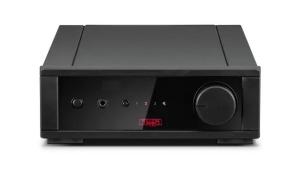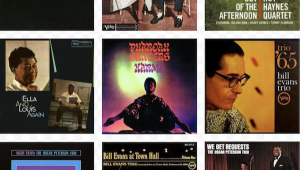Does Curl's Jr. Have the Beef?

Parasound doesn’t divulge numbers but clearly his hunch proved correct. A few years ago the company introduced the upgraded JC3+ version, which in 2014 AnalogPlanet most favorably reviewed.
Now comes a “Jr.” version priced at $1495, or half the cost of the JC3+. With its ultra-thin profile it more resembles a “slice off the old block” than it does a chip!
The overall circuit topology is more similar to the JC3+’s than it is different. So how did Parasound save both cost and space? A single board behind a single shield accommodates both channels of gain and equalization circuitry whereas on the JC3+ each is on a separate board and separately shielded. Both channels here share a power supply. The JC3+’s is dual-mono.
Yet like the JC3+, the Jr.’s power supply utilizes a shielded toroidal power transformer, high speed/soft recovery bridge diodes and background noise eliminating common mode inductors. The circuit board layout and design was by Curl’s long time cohort Carl Thompson and uses high quality parts including REL capacitors, Vishay-Dale resistors and chassis-mounted Neutrik XLR and Vampire 24k gold plated RCA jacks. Muting and mono selection are via relays.

The back panel includes a single set of RCA jacks that can be switched between MM and MC. In MM loading is fixed at 47kOhms. When set for MC, a rotary knob allows for continuously variable resistive loading between 50 ohms and 550 ohms. This is a carry-over from the JC3+, which also offers this flexibility—something the original JC3 did not. A three-position switch selects gain of 40dB, 50dB or 60dB (46dB/56dB/66dB balanced).
All of these features and the build quality are, to say the least, unusual at this price point where “wal-warts” and dipswitches are far more common. Also unusual are the low noise specifications (see below).
Sonics
I auditioned the JC 3 Jr. with an Ortofon 2M Blue in MM mode and both a Lyra Atlas (standard .56mV output) and an Ortofon Anna (.2mV output). Yes the two MC cartridges are surely “overkill” for a $1495 phono preamplifier but they were what was installed as part of other reviews underway for Stereophile and I thought it would be interesting to hear how the JC3 Jr. handled them—especially the super low output Anna mounted on the new 9” Kuzma 4 Point arm on the Continuum Caliburn.
But first, the JC3 Jr. with the 2M Blue, which was mounted on a modestly priced Oracle Audio Origine turntable ($2000 with arm)—review coming shortly. I started with Analogue Productions’ 45rpm reissue of Dean Martin’s sublime Dream With Me (AAPP-076) originally released in 1964. It’s about as intimately recorded an album as you’re likely to hear. Martin is just about swallowing the microphone as he sings unadorned a selection of boozy, late night ballads backed by Barney Kessel on guitar, Red Mitchell on double bass, Irv Cottler on drums and Ken Lane on piano.
I’m listening for the bass articulation and freedom from hangover (no pun intended with Deano singing!) and the extra warmth lesser phono preamps tack on. You want the bass notes to have a clean, nimble attack, a tuneful sustain and a natural decay. The combo handled all of this very well. Ditto Kessel’s guitar filling in the space on the right channel.
Where you really notice the difference between a $200 cartridge and a $2000 one is in the vocals, which are slightly “canned”, opaque and sound more two than three-dimensional and less “ethereal” and less “Dean lives” than you get from the best front ends. Transients were somewhat blunted, sustains limited and decays shortened.
However, when I plugged the 2M into the MM input of the $50,000 CH Precision P1/X1 combo, while it was, of course, much better than it was through the JC 3 Jr., most of the P1’s performance was wasted. The 2M Blue can do only so much. The point is, the JC3 Jr. extracts probably 90% of what’s possible from the 2M Blue for a fraction of the P1/X1’s price. That said, if you’re running MM only and plan on not moving to a MC, consider a dedicated MM only phono preamp.
The “mono” button is a valuable addition for those who enjoy older mono releases, many of which are again being reissued and appreciated for what they often do better than their “stereo” counterparts. Rhino’s recent Otis Redding mono box is a good example as are Mobile Fidelity’s double 45rpm Dylan mono reissues. As most of you know, the “mono” button cancels out the superfluous vertical modulations that consist of noise and rumble, thus producing a far more enjoyable listening experience.
Switching to the Ortofon Anna provided a far more accurate window onto the JC3 Jr.’s actual performance because that of the low cost cartridge would not limit it. Because of the Anna’s low internal impedance of 6 ohms, the recommended load is “greater than 10 ohms”.
I found 50 ohms best but it made me realize that users unfamiliar with variable loading may go where the brightness lies—it’s just human nature. So when you’re adjusting and listening, try to listen at a given setting after letting your ears adjust or you’re likely to find the sound “muffled” and move to a higher position on the dial.
The JC3 Jr.’s 60dBs of gain and low noise spec made it more than capable of dealing with the Anna’s low .2mV output. The Anna has a full, rich bottom end that the JC Jr. well expressed. Exhibit Records recently reissued John B. Sebastian (eXLP 44066) John Sebastian’s first solo album originally released in 1970 on Reprise. Kevin Gray cut from the original master tape—something that would be obvious first listen—and the JC3 Jr did a fine job of expressing the fine recording’s dynamic power, bottom end weight, three-dimensionality and rich harmonics.
I thought the record corny when it was first released but in retrospect it’s much better than that and the sound is superbly natural. Guests include Stephen Stills, The Ikettes, Dallas Taylor, Buddy Emmons, David Crosby, Graham Nash and Buzzy Linhart among others, all of whom add instrumental luster to some underappreciated Sebastian tunes. Check it out!
Having enjoyed the record for a few weeks through my reference rig made clear what you miss while keeping $48,500 in your bank account. The good news though is that the JC3 Jr “nips and tucks” more than it produces glaring additive problems. Most noticeable is a lack of air and “sparkle” on top (not related to loading), and a textural dryness in the midrange.
On the other hand the bottom end is solid and well-extended and the preamp’s overall tonal balance is refreshingly neutral and very similar to what I noted with the JC3+: “The JC3+’s midrange neutrality and transient cleanliness and its lack of grit, hyper edge definition or on the other side of that divide, softness, challenge the performance of far more expensive preamplifiers.” I’ll stick with that here too as well as with my JC3+ conclusion:
“It does everything well and its minor acts of omission will not be noticed or missed on the kinds of systems in which it’s likely to be used. In real world priced systems it’s likely to max-out vinyl performance and keep you locked in to listening for years to come.” Overall then, the JC 3 Jr. is not quite as good as the JC3+ but at half the price it comes surprisingly close.
Specifications
See the Parasound website





